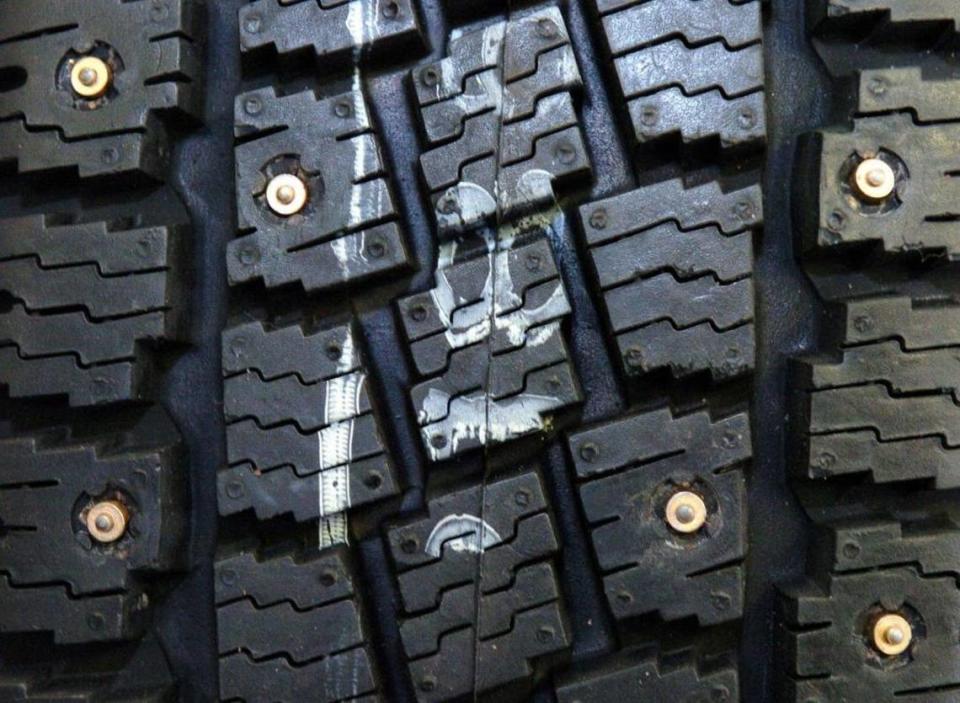Debating about putting winter tires on your car, Boise? You should do it soon. Here’s why
The road up to Bogus Basin is a tricky one — 16 miles of tight twists and turns through the Boise Mountains with little room for error.
The drive can become even trickier in winter, as a constant stream of snowstorms over the Boise Foothills and mountains often create dangerous driving conditions. Sometimes those storms extend into Boise, too, turning the downtown area into a slippery and slushy mess.
Although snow isn’t in the forecast yet for Boise, the mountains have already enjoyed their first snowfall of the season. Bogus Basin has already received 12 inches of snow this month, and with Boise’s average first snowfall of the year landing on Nov. 18, it’s only a matter of time until fall gives way to winter.
Why switch to winter tires?
The average person will only ever deal with three types of tires: all-season, all-terrain and winter, according to Eli Roberts, store manager at Discount Tire in Boise. Pickup trucks, SUVs and larger vehicles typically employ all-terrain tires, while most other cars come with all-season tires.
While all-season tires can offer some traction through the colder months, winter tires are designed to work when temperatures drop below 45 degrees. Regular tires begin to harden when they drop below 45 degrees, Roberts told the Idaho Statesman last winter, while a winter tire will remain soft and easier to drive in snow and ice.

The tread on the tires is also explicitly designed to have better traction on snow and ice and to evacuate slush from under the tires more easily, Roberts noted.
It’s also important to make sure your tires’ tread hasn’t been worn down too much, according to AAA Idaho public affairs director Matthew Conde. Tread allows a car to turn more corners tightly, accelerate smoothly and brake quicker.
“This time of year, we remind drivers to check their tires to ensure they have adequate tread,” Conde said in a news release. “A quick way to check is the quarter test – turn a quarter upside down in the tread, and if you can see the top of George Washington’s head, it’s time to think about replacing your tires.”
It’s not just snow and ice for which winter tires are helpful; they’re effective even when the roads are dry, but temperatures are bitterly cold.
Roberts noted that all-season tires will take longer to stop when braking in low temperatures because the rubber can’t grip the cold surface as well as winter tires.
When should you change to winter tires?
If you haven’t switched to winter tires, you’re already late to the party. Fortunately, it’s never too late to make the switch.
Roberts recommends changing to winter tires when temperatures are consistently below 45 degrees, which in Boise happens around mid- to late October. The opposite applies for taking off the winter tires: when temperatures are consistently above 45 degrees, which is typically around late March and early April.
Are you considering just keeping the winter tires on year-round? That’s also not recommended.
The more flexible rubber compound on winter tires will wear down more quickly in warmer temperatures, according to Bridgestone, which means having to replace them more often. The softer tire compound will also offer slower response times for turning and breaking in warm weather than summer or all-season tires.
How much do winter tires cost?
Winter tires are slightly more expensive than all-season tires, Roberts said. You can purchase winter tires for about $100 per tire on the low end, while all-season tires cost approximately $70.
Prices also depend on the type of car and brand of tire; tires for trucks, vans and SUVs typically will cost more money than tires for smaller cars.
Winter tires can be purchased at multiple locations throughout the Treasure Valley, including Discount Tire, Big O Tires and Les Schwab Tire Center.

